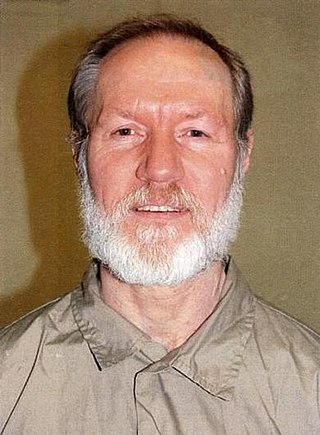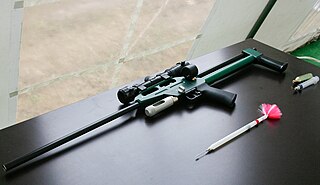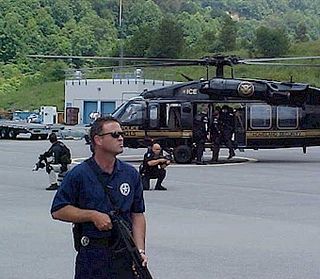
Non-lethal weapons, also called nonlethal weapons, less-lethal weapons, less-than-lethal weapons, non-deadly weapons, compliance weapons, or pain-inducing weapons are weapons intended to be less likely to kill a living target than conventional weapons such as knives and firearms with live ammunition. It is often understood that unintended or incidental casualties are risked wherever force is applied; however, non-lethal weapons minimise the risk of casualties as much as possible. Non-lethal weapons are used in policing and combat situations to limit the escalation of conflict where employment of lethal force is prohibited or undesirable, where rules of engagement require minimum casualties, or where policy restricts the use of conventional force. However, these weapons occasionally cause serious injuries or death due to allergic reactions, improper use and/or other factors; for this reason the term "less-lethal" has been preferred by some organizations as it describes the risks of death more accurately than the term "non-lethal", which some have argued is a misnomer.

The New Mexico State Penitentiary riot, which took place on February 2 and 3, 1980, at the Penitentiary of New Mexico (PNM) south of Santa Fe, was the most violent prison riot in U.S. history. Inmates took complete control of the prison and twelve officers were taken hostage. Several inmates were killed by other prisoners, with some being tortured and mutilated because they had previously acted as informants for prison authorities. Police regained control of PNM 36 hours after the riots had begun. By then, thirty-three inmates had died and more than two hundred were treated for injuries. None of the twelve officers taken hostage were killed, but seven suffered serious injuries caused by beatings and rapes.

The Justice Prisoner and Alien Transportation System (JPATS), nicknamed "Con Air", is a United States Marshals Service airline charged with the transportation of persons in legal custody between prisons, detention centers, courthouses, and other locations. It is the largest prison transport network in the world. Though primarily used by the Federal Bureau of Prisons or U.S. Immigration and Customs Enforcement, JPATS also assists military and state law enforcement.
HM Prison Birmingham is a Category B men's prison in the Winson Green area of Birmingham, England, operated by HM Prison and Probation Service.
The Metropolitan Remand Centre is an Australian prison located at Ravenhall, Victoria, approximately 20 kilometres from the Melbourne CBD on the Western Freeway. The prison is a maximum security remand facility which opened in April 2006 and is operated by the Victorian Department of Justice and Regulation.

A prison officer (PO) or corrections officer (CO), also known as a correctional law enforcement officer or less formally as a prison guard, is a uniformed law enforcement official responsible for the custody, supervision, safety, and regulation of prisoners. They are responsible for the security of the facility and its property as well as other law enforcement functions. Most prison officers or corrections officers are employed by the government of the jurisdiction in which they operate, although some are employed by private companies that provide prison services to the government.
Pontiac Correctional Center, established in June 1871, is an Illinois Department of Corrections maximum security prison for adult males in Pontiac, Illinois. The prison also has a medium security unit that houses medium to minimum security inmates and is classified as Level 3. Until the 2011 abolition of the death penalty in Illinois, the prison housed male death row inmates, but had no execution chamber. Inmates were executed at the Tamms Correctional Center. Although the capacity of the prison is 2172, it has an average daily population of approximately 2000 inmates.

Thomas Edward Silverstein was an American criminal who spent the last 42 years of his life in prison after being convicted of four separate murders while imprisoned for armed robbery, one of which was overturned. Silverstein spent the last 36 years of his life in solitary confinement for killing corrections officer Merle Clutts at the Marion Penitentiary in Illinois. Prison authorities described him as a brutal killer and a former leader of the Aryan Brotherhood prison gang. Silverstein maintained that the dehumanizing conditions inside the prison system contributed to the three murders he committed. He was the longest-held prisoner in solitary confinement within the Bureau of Prisons at the time of his death. Correctional officers refused to talk to Silverstein out of respect for Clutts.
The Security Operations Group (SOG) is a unit of elite corrections officers of Corrective Services NSW, Australia formerly known as the Hostage Response Group (HRG).

The Emergency Response Unit (ERU) is the police tactical unit of the Garda Síochána, Ireland's national police and security service. The unit was a section of the forces' Special Detective Unit (SDU), under the Crime and Security Branch (CSB) until 2017, when the Special Tactics and Operational Command was created to take over its operational duties alongside Armed Support Units.

The New York State Department of Corrections and Community Supervision (NYSDOCCS) is the department of the New York State government that administers the state prison and parole system, including 42 prisons funded by the state government.

A dart gun is an air rifle that fires a dart. The dart is tipped with a hypodermic needle and filled with a sedative, vaccine or antibiotic. A dart gun containing a sedative is called a tranquillizer gun, derived from the word "tranquil", which means "calm".
The Pendleton Correctional Facility, formerly known as the Indiana Reformatory, is a state prison located in Fall Creek Township, Madison County, near Pendleton and about 25 miles (40 km) northeast of Indianapolis. Established in 1923, it was built to replace the Indiana State Reformatory located in Jeffersonville after a fire severely damaged the original property. The Pendleton facility currently offers maximum and minimum-security housing for adult males over 22 years old. The maximum-security portion is made up of 31 acres (130,000 m2) surrounded by a concrete wall. It has an average daily population of approximately 1,650 inmates. Located on the grounds outside the enclosure, the minimum-security dormitory holds approximately 200 prisoners on a daily basis.
Special Operations Response Teams are a group under the US Federal Bureau of Prisons (BOP), a component of the US Department of Justice. The BOP is responsible for maintaining the custody of anyone convicted of committing a federal crime. To achieve this goal, the BOP maintains a number of correctional facilities, which are divided into six regions, throughout the US. These facilities house approximately 211,195 inmates of varying security levels. Facilities are designated as either minimum, medium, maximum, or the most recent addition, super max.

Prisoner transport is the transportation of prisoners from one secure location to another. It may be carried out by law enforcement agencies or private contractors such as Prisoner Transportation Services.
Corrective Services NSW (CSNSW) is an executive agency of the Government of New South Wales, Australia. CSNSW is responsible for the state's prisons and a range of programs for managing offenders in the community. The state has 36 prisons, 33 run by CSNSW and three privately operated. The agency traces its origins back to 1788, when New South Wales was founded as a penal colony.
The Trup Tindakan Cepat, or TTC, is an elite counter terrorism unit within the Malaysian Prison Department.
The Singapore Prisons Emergency Action Response (SPEAR) is a correctional emergency response team within the Singapore Prison Service (SPS).
The British Columbia Penitentiary was a federal maximum security prison located in New Westminster, British Columbia, Canada. The BC Penitentiary operated for 102 years, from 1878 until it was decommissioned in 1980. It was the first federal penal institution west of Manitoba. The Gatehouse was sold on September 8, 2021.
Natasha J. C. McKenna was a 37-year-old African-American woman who died in Fairfax County, Virginia while in police custody. The catalyst event, extraction from her cell and being tasered while shackled, was captured on the video of the Fairfax County jail.










